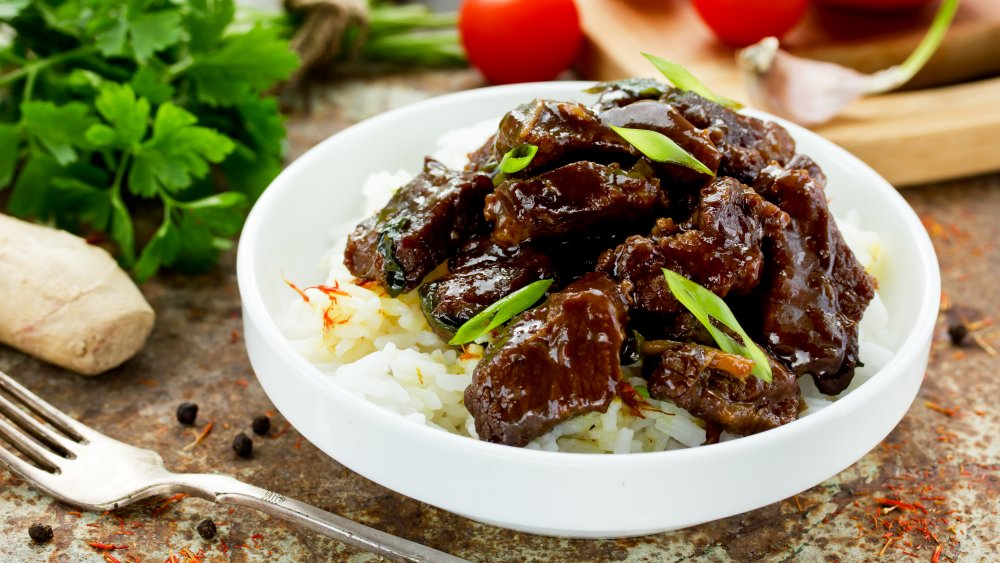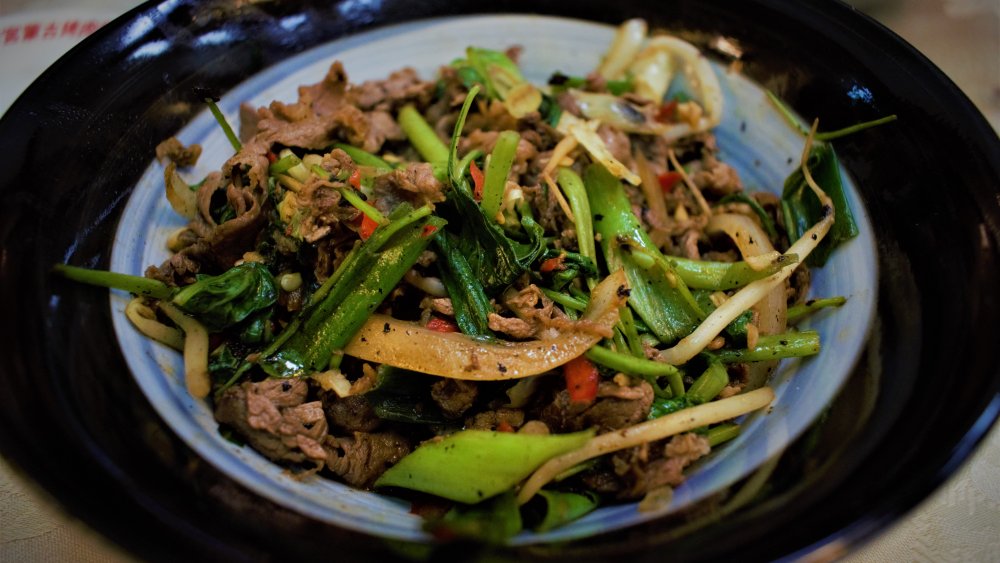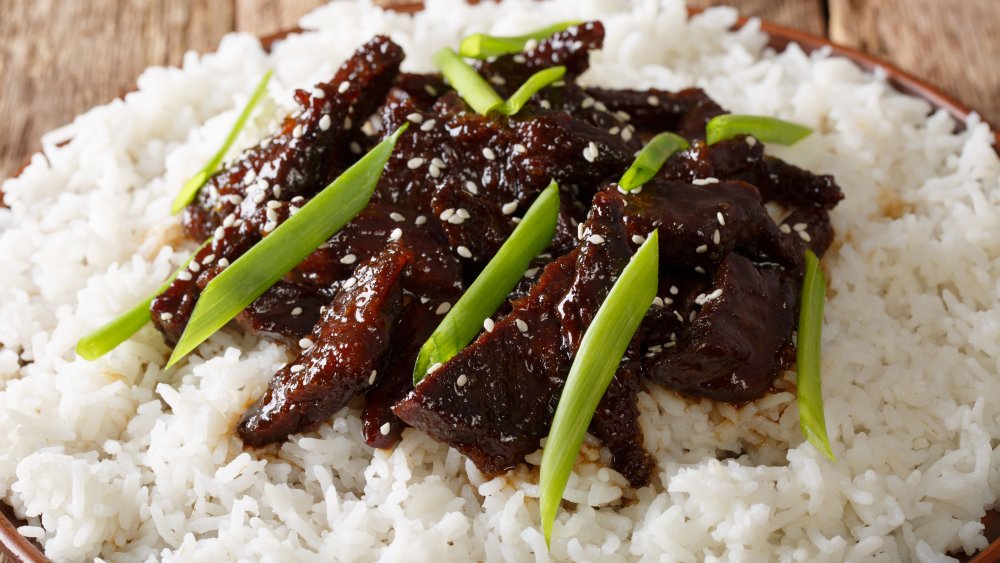The Untold Truth Of Mongolian Beef
Mongolian beef is a popular choice for many of those who at Chinese restaurants can't quite handle the spice of dishes like Mapo Tofu or Kung Pao Chicken. Its sweetness appeals to kids and even adventurous eaters tend to view it as a comfort food. The dish is made of flank steak, a lean (albeit sometimes chewy) cut of beef, with a marinade of brown sugar, soy sauce, ginger, and garlic (via Dinner Then Dessert). The chewiness can be mitigated by slicing the steak thin enough.
The dish is stir-fried at an extremely high temperature, typically around 500 degrees Fahrenheit, which causes the brown sugar in the marinade to caramelize along with the rest of the ingredients. Perhaps the telltale sign of this dish is the green onions or scallions added at the end. Variations on the dish can include mushrooms, broccoli, or cabbage (via This One Vs. That One).
Taiwanese beginnings
The name is somewhat misleading, as this dish doesn't come from Mongolia at all, but is instead a Chinese-Taiwanese creation. Since its introduction to the United States, where it's served atop steamed rice or fried glass noodles, it's become popular in America as well (via Devour Asia). The "Mongolian" aspect of the name was attributed to the dish because the dish was invented at Mongolian barbecue restaurants in Taiwan, where they first sprung up.
But Mongolian barbecue isn't Mongolian at all, and the restaurant concept was invented by a restaurateur named Wu Zhaonan in Taiwan in the 1950s (via Oola). The concept of being able to choose your own meats, vegetables, and sauces and have them all stir-fried together and presented in a bowl was a hit with diners who enjoyed the variety and power they had to create their own meal rather than having a chef do so for them. The ingredients in Mongolian beef were one of the popular combinations often cooked up at these restaurants.
True Mongolian foods
The concept of referring to a restaurant as "Mongolian" in China helped to lend an air of exoticness to the establishment. The Mongolian barbecue restaurants that sprung up at the time were also influenced greatly by Japanese teppanyaki restaurants, where meats, vegetables, and sauces are stir-fried together on a hot griddle, so although various aspects of Mongolian beef are influenced by a number of different countries in Asia, Mongolia isn't one of them.
True Mongolian food, on the other hand, consists of significant amounts of yak milk products such as yak milk cheese and yak milk kefir (via Taste Atlas). Borts, a jerky made of beef, goat, or camel meat is popular as a way to keep meat readily available during the brutally cold winters. Dumplings, soups, stews, and other dishes made predominantly with meat and root vegetables are commonplace, but nothing which remotely resembles Mongolian beef.


